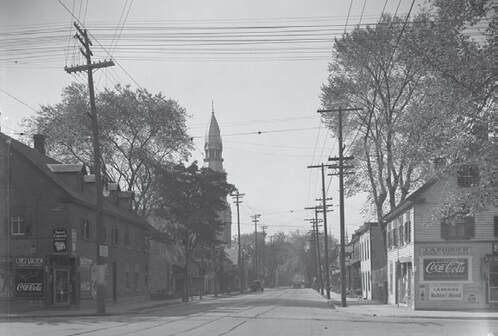 Kind-Edward to St-Patrick, looking west
Kind-Edward to St-Patrick, looking west Built between 1878 and 1888, the distinctive brick house on the southeast corner of St. Patrick and Cumberland housed one of the four businesses of this intersection – a business at each corner. Although situated at the outer edge of the main commercial part of Lowertown, residents near this junction had everything within reach, from meat, groceries and liquor to painted signs.
Regrettably, this last of the original buildings that once stood at this crossroad is now facing the prospect of being surrounded by a proposed four-storey apartment development that would extend along Cumberland, from Murray Street to St. Patrick Street.
Like many Lowertown corner buildings, the house has already experienced physical changes and varied uses over its lifetime. The story of some of the occupants and their enterprises reveals a little background on its evolution and the eventual acquisition of two addresses – 320 St. Patrick Street and 277 Cumberland.
Regrettably, this last of the original buildings that once stood at this crossroad is now facing the prospect of being surrounded by a proposed four-storey apartment development that would extend along Cumberland, from Murray Street to St. Patrick Street.
Like many Lowertown corner buildings, the house has already experienced physical changes and varied uses over its lifetime. The story of some of the occupants and their enterprises reveals a little background on its evolution and the eventual acquisition of two addresses – 320 St. Patrick Street and 277 Cumberland.

 RSS Feed
RSS Feed